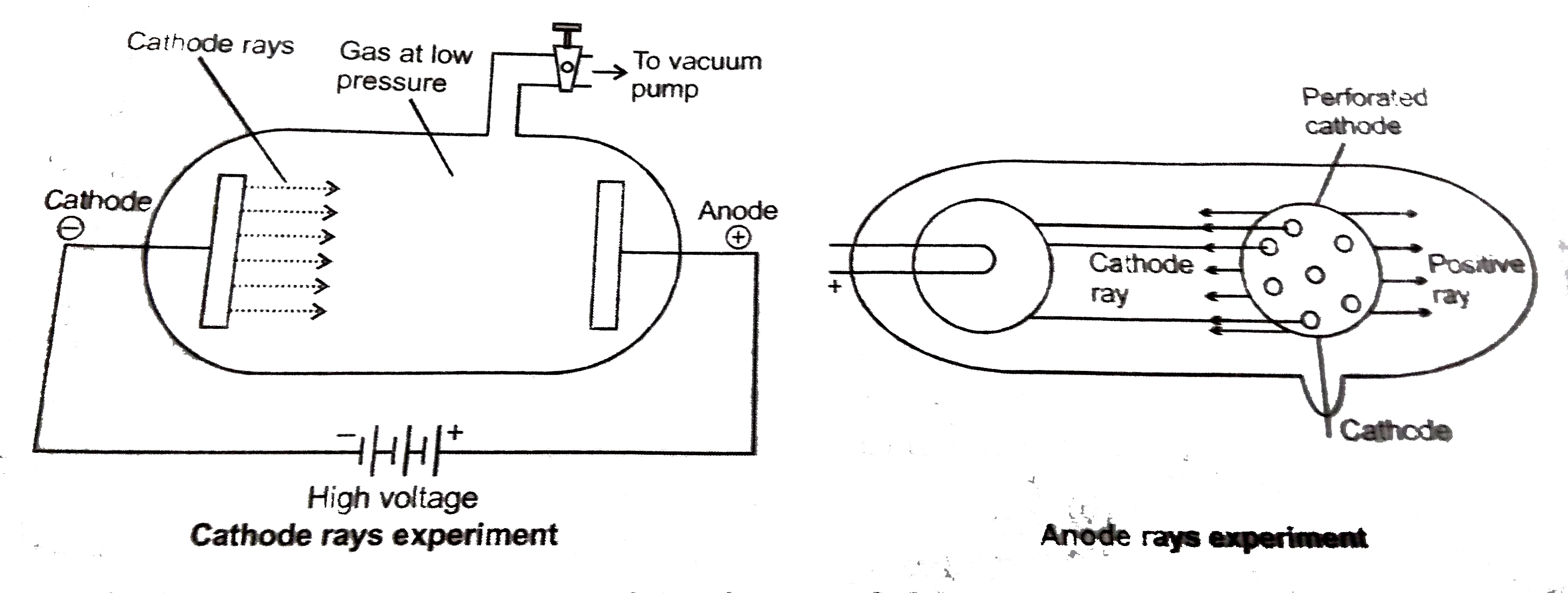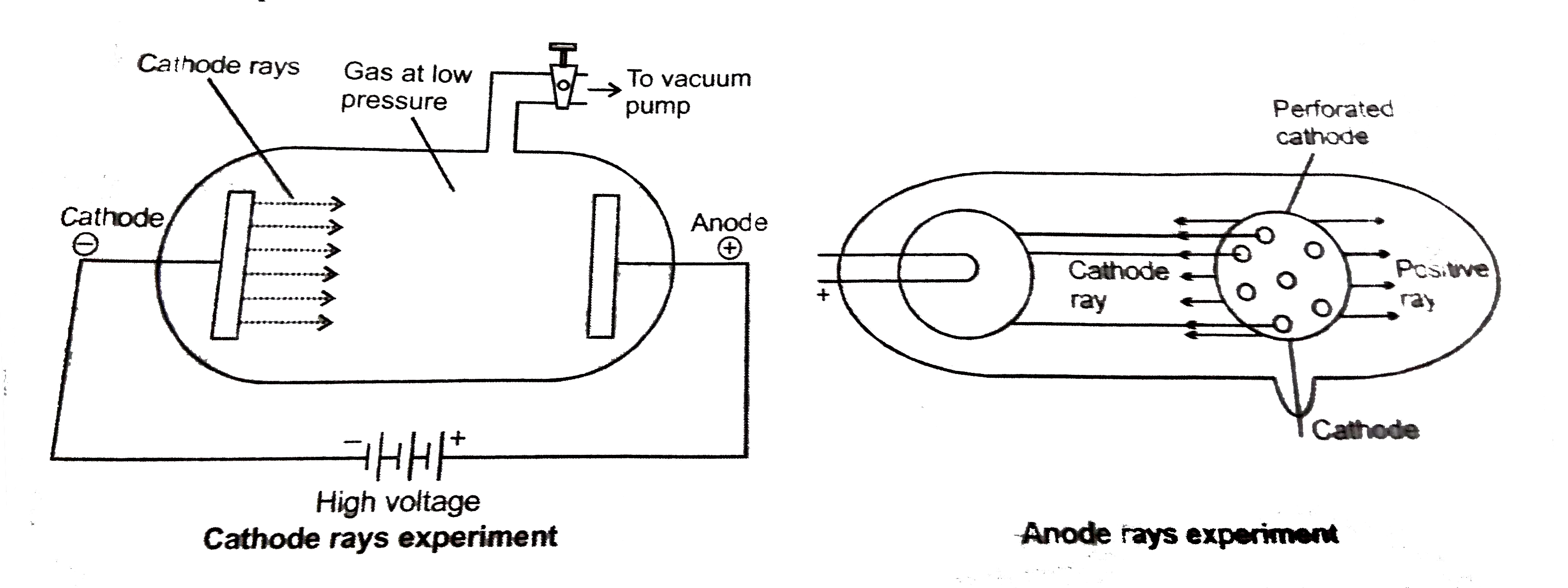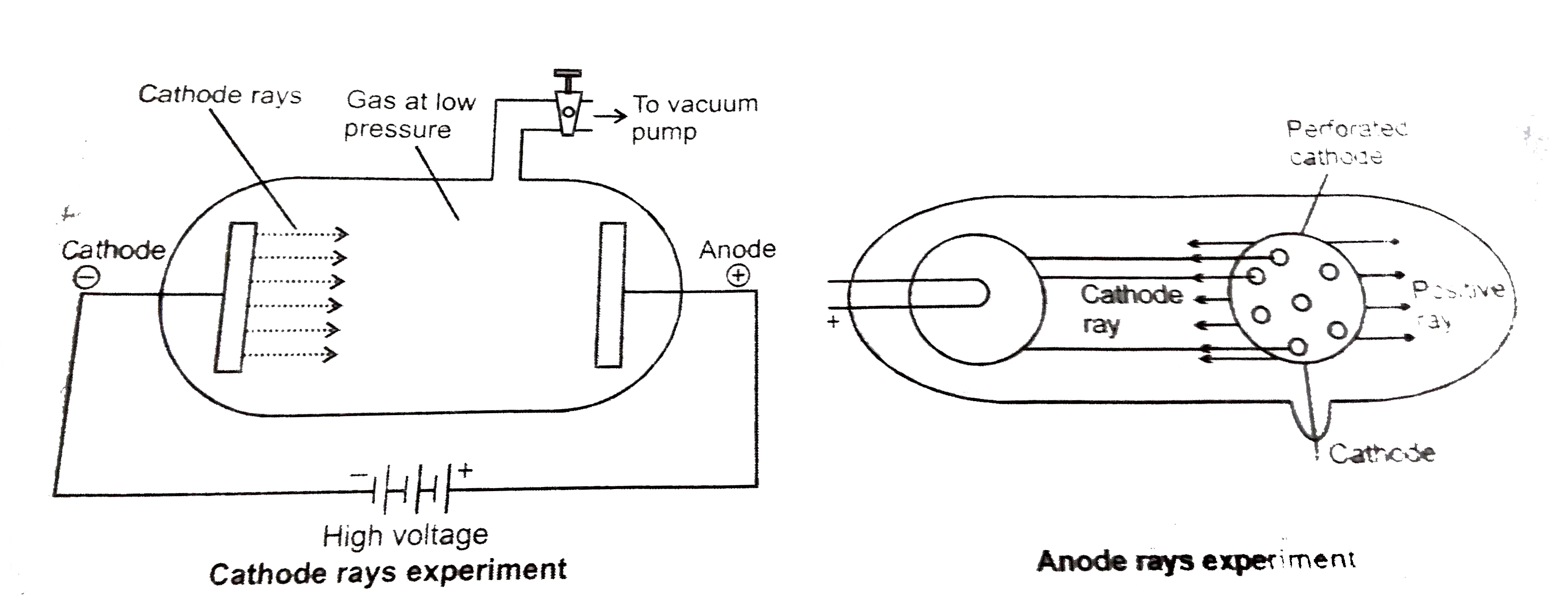In the phenomenon of electric discharge through gases at low pressure , the coloured glow in the tube appears as a result of
excitation of electrons in the atoms
collision between the atoms of the gas
collissions between the charged particles emitted from the cathode and the atoms of the gas
collission between diferent electrons of the atoms of the gas
The correct Answer is:C
To solve the question regarding the colored glow in a tube during electric discharge through gases at low pressure, we can break it down into the following steps:
Step 1: Understanding Electric Discharge
Electric discharge through gases occurs when a high voltage is applied across two electrodes (cathode and anode) in a gas-filled tube. This causes electrons to be emitted from the cathode.
Hint: Consider what happens when a voltage is applied to a gas-filled tube.
Step 2: Role of Charged Particles
The emitted electrons (charged particles) from the cathode collide with the gas atoms present in the tube. These collisions can transfer energy to the gas atoms.
Hint: Think about what happens during collisions between electrons and gas atoms.
Step 3: Excitation of Electrons
When the electrons collide with the gas atoms, they can excite the electrons in the gas atoms to higher energy levels. This is known as excitation.
Hint: Recall what happens to an electron in an atom when it absorbs energy.
Step 4: Return to Ground State
After excitation, the electrons in the gas atoms eventually return to their ground state. As they do so, they release energy in the form of light.
Hint: What happens to an excited electron when it loses energy?
Step 5: Emission of Visible Light
The energy released during this transition corresponds to specific wavelengths of light, which can be visible to the human eye. This is why we see a colored glow in the tube.
Hint: Consider the relationship between energy levels in atoms and the colors of light emitted.
Conclusion
The colored glow in the tube during electric discharge through gases at low pressure is a result of the excitation of electrons in the atoms of the gas. When these excited electrons return to their ground state, they emit light of specific wavelengths, leading to the observed colors.
Final Answer: The colored glow in the tube appears as a result of the excitation of electrons in the atoms.
Electric discharge through gases occurs when a high voltage is applied across two electrodes (cathode and anode) in a gas-filled tube. This causes electrons to be emitted from the cathode.
The emitted electrons (charged particles) from the cathode collide with the gas atoms present in the tube. These collisions can transfer energy to the gas atoms.
When the electrons collide with the gas atoms, they can excite the electrons in the gas atoms to higher energy levels. This is known as excitation.
After excitation, the electrons in the gas atoms eventually return to their ground state. As they do so, they release energy in the form of light.
The energy released during this transition corresponds to specific wavelengths of light, which can be visible to the human eye. This is why we see a colored glow in the tube.
The colored glow in the tube during electric discharge through gases at low pressure is a result of the excitation of electrons in the atoms of the gas. When these excited electrons return to their ground state, they emit light of specific wavelengths, leading to the observed colors.
Similar Questions
The study of discharge of electricity through gases led to the discovery of
View SolutionThe phenomenon due to which white light splits into seven colours on passing through a prism is called spectrum.
View SolutionThe existence of negatively charged particle in an atom was shown by J.J. Thomson as a result of the studies of the passage of electricity through gases at extremely low pressure known as discharge tube experiments. When a high voltage of the order of 10,000 volts or more was impressed across the electrodes, some sort of invisible rays moved from the negative electrode to the positive electrode these rays are called as cathode rays.

Cathode rays travel in straight path in absence of electrical and magnetic field . Cathode rays consist of material part and charged particles? Cathode rays produce X-rays and light is emitted when they strike on ZnS screen. Cathode rays penetrate through thin sheets of aluminium and other metals . They affect the photogenic plate and passes heating effect when they strike on metal foil. The raito of charge to mass i.e charge/mass is same for all the cathode rays irrespective of the gas used in the tube.
The existence of positively charged particle in an atom was shown be E. Goldstein. He repeated the same discharge tube experiments by using a perforated cathode. It was observed that when a high potential difference was applied between the electrodes, not only cathode rays were produced but also a new type of rays were produced simultaneoulsy from anode moving towards cathode and passes through the holes or canal of the cathode. These termed as canal rays or anode rays.
These rays travel in straight lines and consists of positively charged particles. These rays have kinetic energy and produces heating effect also. The e/m ratio of these rays is smaller than that of electrons. Unlike cathode rays, their e/m value is dependent upon the nature of the gas taken in the tube. These rays produced flashes of light on ZnS screen and can pass throughs thin metal foils. They can produce physical and chemical changes and are capable to produce ionisation in gases.
Select the incorrect statement.
View SolutionThe existence of negatively charged particle in an atom was shown by J.J. Thomson as a result of the studies of the passage of electricity through gases at extremely low pressure known as discharge tube experiments. When a high voltage of the order of 10,000 volts or more was impressed across the electrodes, some sort of invisible rays moved from the negative electrode to the positive electrode these rays are called as cathode rays.

Cathode rays travel in straight path in absence of electrical and magnetic field . Cathode rays consist of material part and charged particles? Cathode rays produce X-rays and light is emitted when they strike on ZnS screen. Cathode rays penetrate through thin sheets of aluminium and other metals . They affect the photogenic plate and passes heating effect when they strike on metal foil. The raito of charge to mass i.e charge/mass is same for all the cathode rays irrespective of the gas used in the tube.
The existence of positively charged particle in an atom was shown be E. Goldstein. He repeated the same discharge tube experiments by using a perforated cathode. It was observed that when a high potential difference was applied between the electrodes, not only cathode rays were produced but also a new type of rays were produced simultaneoulsy from anode moving towards cathode and passes through the holes or canal of the cathode. These termed as canal rays or anode rays.
These rays travel in straight lines and consists of positively charged particles. These rays have kinetic energy and produces heating effect also. The e/m ratio of these rays is smaller than that of electrons. Unlike cathode rays, their e/m value is dependent upon the nature of the gas taken in the tube. These rays produced flashes of light on ZnS screen and can pass throughs thin metal foils. They can produce physical and chemical changes and are capable to produce ionisation in gases.
For cathode rays the value of e/m:
View SolutionThe existence of negatively charged particle in an atom was shown by J.J. Thomson as a result of the studies of the passage of electricity through gases at extremely low pressure known as discharge tube experiments. When a high voltage of the order of 10,000 volts or more was impressed across the electrodes, some sort of invisible rays moved from the negative electrode to the positive electrode these rays are called as cathode rays.

Cathode rays travel in straight path in absence of electrical and magnetic field . Cathode rays consist of material part and charged particles? Cathode rays produce X-rays and light is emitted when they strike on ZnS screen. Cathode rays penetrate through thin sheets of aluminium and other metals . They affect the photogenic plate and passes heating effect when they strike on metal foil. The raito of charge to mass i.e charge/mass is same for all the cathode rays irrespective of the gas used in the tube.
The existence of positively charged particle in an atom was shown be E. Goldstein. He repeated the same discharge tube experiments by using a perforated cathode. It was observed that when a high potential difference was applied between the electrodes, not only cathode rays were produced but also a new type of rays were produced simultaneoulsy from anode moving towards cathode and passes through the holes or canal of the cathode. These termed as canal rays or anode rays.
These rays travel in straight lines and consists of positively charged particles. These rays have kinetic energy and produces heating effect also. The e/m ratio of these rays is smaller than that of electrons. Unlike cathode rays, their e/m value is dependent upon the nature of the gas taken in the tube. These rays produced flashes of light on ZnS screen and can pass throughs thin metal foils. They can produce physical and chemical changes and are capable to produce ionisation in gases.
Which is not true with respect to cathode rays?
View SolutionGases begin to conduct electricity at low pressure because
View SolutionIn colour discharge tubes,which is used?
View SolutionOzone is prepared by passing silent electric discharge through oxygen. In this reaction
View SolutionDuring gaseous exchange the gases diffuse from high partial pressure to low partial pressure.
View SolutionName the phenomenon involved : When electric current is passed through acidulated water, hydrogen and oxygen are formed.
View Solution
